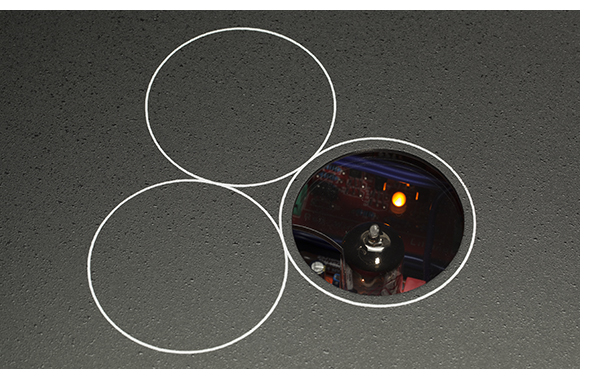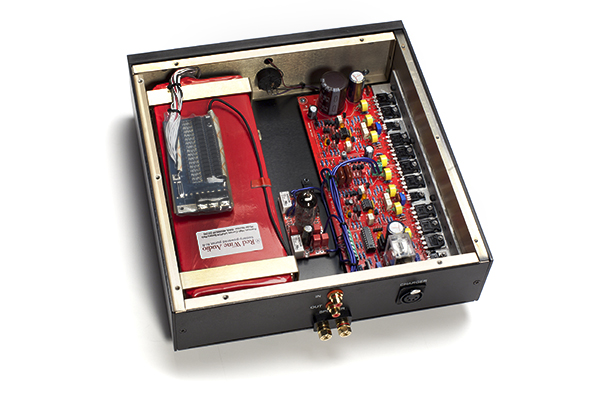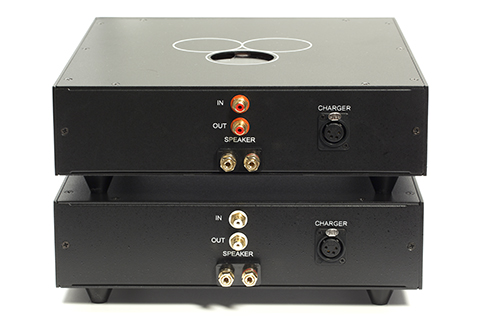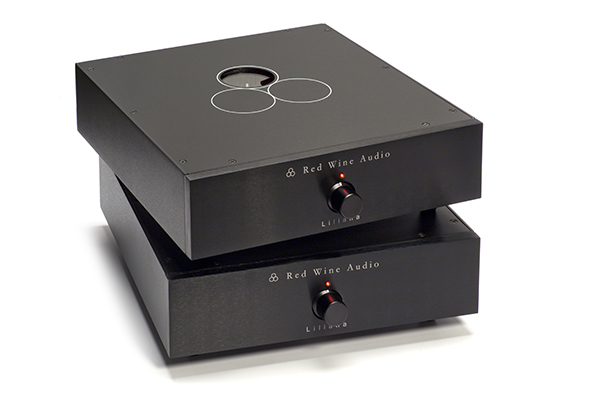Red Wine Audio Liliana Monoblocks Battery Powered Bliss
By Jeff Dorgay
Red Wine Audio founder Vinnie Rossi has built a solid reputation on battery-powered gear, utilizing LiFePO4 cells with his unique SMART battery management that eliminates the headaches of batteries, while providing the maximum life and performance that this technology can deliver.
His lower powered Signature 15 and 30.2 amplifiers have won awards and acclaim the world over for a smooth sound that sounds neither tube nor transistor-like, and are dead quiet, eliminating the interaction with the power grid.
Having used Rossi’s amps for some time now, I’ve always felt they were very special, but often thought, “if only they had a bit more power…” With the Liliana, the dream is realized. A Class A 6922 input stage drives a Class AB MOSFET output stage to the tune of 115 watts into 8 ohms, doubling to 230 watts 4 ohms. Serious power.
If you are a current RWA amplifier owner, a quick peek at the website reveals a healthy trade up program, should the urge to upgrade strike you. RWA warranties all of their products for five years, and a few TONE readers that have had minor issues have confirmed that Rossi’s service department is helpful and quick – A testament to the tremendous owner loyalty that RWA enjoys.
This new design has scaled up perfectly; nothing in the sonics department has been compromised. Previous RWA owners will notice the same delicacy from previous models, but the additional power opens up the door to more speaker options. Pairing the Lilianas with the $120,000/pair Sonus faber Aida is a fantastic match, immediately underscoring that these amplifiers are of top quality and able to be installed in the context of any system. Though the RWA amplifiers give up a little bit of grunt to the Pass Labs XA200.5 monoblocks, there is a clarity in the upper registers very similar to what Pass is doing with their First Watt amplifiers.
 Grain free sound
Grain free sound
If the RWA amplifiers can be said to possess a “sound,” it’s a lack of the grain that creeps into components that are tethered to the AC line. I’ve managed to eliminate this from both of my reference systems, but at great cost in massive power cords and power line conditioners. I’ve even used one of RWA’s Black Lightning battery supplies with various Nagra components, achieving similar results. I also currently have another Black Lightning on order for the rest of my components running on 12 or 24 volts DC.
As Trey Gunn’s “The Joy of Molybdenum” hits the Aidas, I’m instantly convinced that these amplifiers are indeed very special. This is a dense recording, with some rapid-fire riffs from Gunn, backed up with a solid bass fundamental. Even at high volume, the Lilianas keep their composure and preserve the three-dimensional soundstage present on this recording.
Plumbing the depths of just how much bass these amplifiers can muster, a quick speaker swap from the Aidas to my reference GamuT S9s, which are a bit easier to drive and slightly less current dependent is telling. Here, going through a set of Prince tracks, spanning the generations proves that they can go down very deep. “Insatiable,” from the Diamonds and Pearls album begins with a subterranean, loose, whumpy, synth bass line that is tough for any amplifier – yet the Lilianas keep their composure and handle this torturous track brilliantly.
Mark Ribot’s “Requiem For a Revolution,” from his current Silent Movies album is chock full of texture, with dexterous guitar work from Ribot. If you’ve had the opportunity to see him recently, you know the fire that he brings to a live performance, full of nuance and emotion. The Lilianas ability to capture low-level detail clearly makes it easy to close my eyes with the mighty GamuTs and imagine I’m back in the main hall at the Montreal Jazz Festival again. And of course, those of you that crave female vocals will not be disappointed.
Listening to a cross section of acoustic music, both jazz and classical through the Dynaudio Confidence C1 II speakers in room two proves equally rewarding. The Lilianas have an excellent sense of pace and timing, combined with tons of texture. Cymbals sound as they should, with plenty of attack and texture. An old favorite on vinyl, The Three, featuring Joe Sample on keyboards and Shelly Manne on drums is a direct to disc LP that has some of the cleanest cymbal sounds ever captured to vinyl. Lee Morgan’s Tom Cat is another great example, with some fantastic brush work on the drums. Instead of just sounding scratchy, the RWA amps flesh out the texture perfectly.
One of the greatest advantages to using a pair of monoblock power amplifiers is the additional channel separation. Combining this with a complete lack of electrical interaction because of the battery power makes for an otherworldly stereo effect. I found when listening to the Dynaudio monitors, the Penaudio Cenyas or the MAD 1920s, the surreal mini monitor effect, that of listening to gigantic headphones in your listening chair was further heightened. Taking inventory of some ambient and techno tracks from Eno, Deadmau5 and Tosca proved trippy. Tosca’s “Me and Yoko Ono” was pure pleasure, with instruments and environmental sound bits everywhere.
 At the edge
At the edge
The only place the Lilianas give up a little bit of ground is when being pushed beyond reasonable and prudent levels. When the Lilianas are pushed to their power limits, the soundstage just flattens out somewhat, instead of the sound becoming grating or harsh. Even operating at brain damage levels, the Lilianas do not generate much heat and are still only lukewarm to the touch.
However compared to other things in their power and price class, they come through brilliantly, and we probably shouldn’t be playing Van Halen that loud anyway. 230 watts into 4-ohms is still really not enough to drive the Magnepans to major volume, but the Lilianas prove an exquisite match for the MartinLogan Montis speakers we recently reviewed. The speed and low-level detail that the battery power brings to the table is just what the doctor ordered.
Life off the grid
RWA claims 6 – 8 hours before these amplifiers need to be recharged, which is best done overnight. The LFP batteries do not have a memory effect, and even after months of charge and recharge cycles, they still manage to play for very close to 8 hours without fail. For everyone but me, who has their system on for 12-14 hours a day, this should be more than enough time for serious listening. If you lose track of playback time, when the amplifiers run out of battery power, they just turn silently off, without any annoying clicks, pops or anomalies. Click the front panel switch back to the charge position (or On/Charge to play via the external charger providing power from the grid).
Thanks to the SMART battery management, you can leave the chargers connected permanently. They automatically switch out of the circuit when playing in pure battery powered mode. Considering the amount of money you will save not purchasing a pair of premium power cords, a power line conditioner or a fancy AC outlet, the $6,000 price for a pair of Lilianas is not so crazy after all. Not being limited by power cord and outlet choices also gives you more flexibility when choosing the location for your RWA amplifiers.
Setup
The Lilianas are easy to integrate into your system. They do feature single ended RCA inputs, but I had no problems using them with a fully balanced preamplifier like the ARC REF 5SE or the Burmester 011 through either the balanced outputs (via an adaptor) or the RCAs.
The RWA logo on the top surface of the amplifier is functional as well as decorative. There is a glass window that rotates out of the way, allowing easy access to the 6922 driver tube inside, making it easy for those that like to roll tubes. Needing only one per monoblock, you can try some fairly exotic tubes without breaking the bank. I had a friend drop by with a pair of NOS Telefunken CCa tubes that are probably one of the most rare and expensive varieties, to great result. The Lilianas got sweeter through the midrange, though at the expense of a bit of the LF weight – yet this is a fantastic way to fine tune the amplifiers to your speakers and your taste.
The stock tubes are great all-rounders, offering an excellent balance between low noise and linear frequency response. However, those requiring a bit more “tube magic” can choose their favorite NOS tube to voice the amplifier as they see fit. The glass window glows red until the tube has warmed up, which takes about 45 seconds.
 A sound choice
A sound choice
The Red Wine Audio Liliana monoblocks will make an excellent addition to your system. They feature neutral tonality, speed, dynamics and low level detail retrieval that few amplifiers in their price category can match. Combining that with their compact size and minimal power requirements for charging the internal battery, these are a fantastic pair of amplifiers that will serve all but the most power hungry speakers. Best of all, RWA offers a 30-day refund period should you find that they aren’t the perfect dance partners for whatever reason. Highly recommended!
The Red Wine Audio Liliana Monoblock power amplifiers
MSRP: $6,000/pair
Peripherals
| Analog Source | AMG V-12 turntable, Clearaudio Statement cartridge |
| Digital Source | dCS Paganini stack, Sooloos Control 15, Aurender S10 |
| Phonostage | Simaudio MOON 810LP |
| Preamplifier | ARC REF 5SE, Burmester 011, Robert Koda K-10 |
| Speakers | GamuT s9, Sonus faber Aida, Dynaudio Confidence C1, MartinLogan Montis, Quad 57, Penaudio Cenya |
| Cables | Cardas Clear |
| Accessories | Furutech DeMag, DeStat, GIK acoustic treatments |



